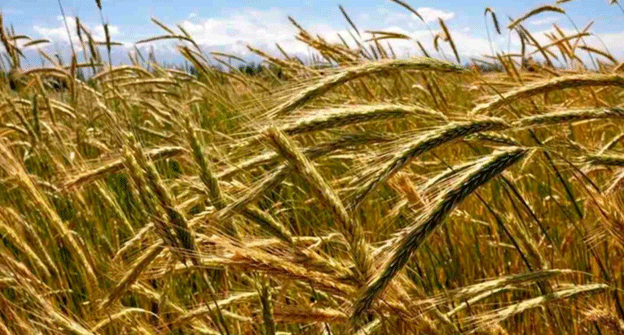In recent years, rye has made a strong comeback in Argentina, especially in the province of La Pampa, which has become one of the country’s top producers of the crop. In the 2023/24 season, the planted area for rye reached 185,650 hectares, with 28,513 hectares harvested, resulting in a total production of 34,862 tons. This production, though slightly lower than last year’s harvest by 188 tons, still positions La Pampa as the second-largest rye producer in the country, accounting for 16% of Argentina’s total rye stock, which climbed to 217,699 tons in 2024.
Rye, an ancient grain once considered the “poor cereal” due to its use in harsh climates and low-value markets, is now experiencing a renaissance. Experts predict that in the coming years, rye will play an increasingly important role on the global stage, especially as dietary preferences shift toward more nutrient-dense grains. Rye is highly valued for its nutritional content, containing more protein than rice, wheat, and oats, and providing a better balance of amino acids, including lysine, which is typically limited in other cereals. Although it contains gluten, rye has less of it than wheat, making it a healthier alternative for some consumers.
Regional Production Overview
According to data from Argentina’s Ministry of Agriculture (as of September 2024), rye production is concentrated in a few key regions. The largest producer is Buenos Aires province, with a massive 138,691 tons, accounting for 63.7% of the national total. La Pampa, with its 35,050 tons, follows closely, while Córdoba contributes 28,467 tons. Smaller but significant contributions come from Santiago del Estero (6,830 tons) and San Luis (3,350 tons).
Within La Pampa, the highest rye-producing departments are Catrilo (9,594 tons), Toay (7,571 tons), and Atreuco (7,459 tons). The province’s climate varies from sub-humid in the east to semi-arid in the west, allowing rye to thrive even in less favorable growing conditions due to its hardiness. Despite harvesting only 15.3% of the planted area, La Pampa remains a critical region for rye production, both for grain and forage use.
The Return of Rye in Global Markets
The resurgence of rye is not only a domestic trend. Globally, rye is becoming increasingly popular due to rising demand from the food industry. The grain is used in a wide range of products, from rye bread to fast-food chains’ burger buns, and even in specialized diets for celiac patients. Rye’s higher fiber content also makes it a key ingredient in many health-conscious markets, promoting digestive health and regulating intestinal function.
As global food shortages and reduced supplies from major producers like Ukraine and Russia put pressure on grain markets, rye prices have increased. This, combined with growing recognition of rye’s nutritional benefits, is driving renewed interest in its cultivation. Argentina is now in a position to capitalize on this trend, and rye’s role in international markets is expected to grow, alongside other key crops like soybeans, flaxseed, and barley.
Challenges and Opportunities
One of the major challenges to rye production is drought. La Pampa, in particular, faced reduced yields in 2024 due to dry conditions. However, experts believe that without the drought, the region could have surpassed the nearly 50,000-ton harvest seen in the 2021/22 season.
Another challenge is competition from hybrid crops like triticale, a rye-wheat crossbreed that has outperformed rye in some areas due to its higher quality and longer growing season. However, the revaluation of pure rye, particularly for its nutritional and health benefits, is likely to keep demand strong. The cereal’s reputation is shifting from being a low-value forage crop to a highly sought-after grain for both human and animal consumption.
Rye’s comeback in Argentina is a testament to the crop’s adaptability and increasing global relevance. As demand for nutritious grains rises, rye is emerging as a key player in Argentina’s agricultural landscape. The province of La Pampa, with its extensive rye fields, is well-positioned to benefit from this growing trend, provided it can overcome environmental challenges and maintain competitive yields. The future of rye looks promising, both as a food staple and a valuable forage crop, with global dietary shifts likely to bolster its significance in the coming years.
Error




